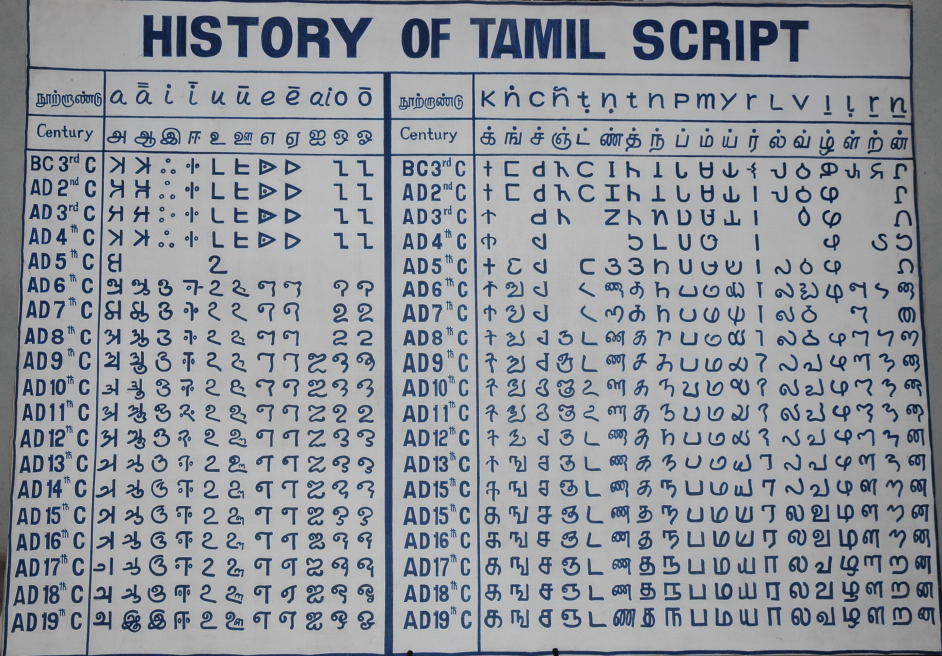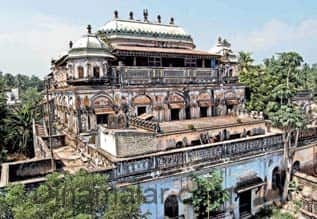 |
| @ Kazhugumalai Photo courtesy: Ms Ramamani Jeyaraman |
For the last five years, Tamil Heritage Trust (THT), an
organization of heritage lovers in Chennai, have been organizing the site seminar every
year as annual event. 'Prof Swaminathan mooted and organized the concept of a
Site Seminar, to familiarize a few individuals passionately interested
in the heritage of the Tamil country, but clueless about where and how
to start.' Table 1 shows the list of site seminars organized by Tamil Heritage Trust.
Table 1. List of Site Seminars Organized by Tamil Heritage Trust
Table 1. List of Site Seminars Organized by Tamil Heritage Trust
Year
|
Name of the Site Seminar
|
Place or Region
|
State
|
2010
|
Mamallapuram Site Seminar Athyanthakaama Ashrama Vijaya
|
Mamallapuram
|
Tamil Nadu
|
2011
|
Paranjothi Yathirai |
Ajanta & Ellora
|
|
2012
|
Mukkudai Yathirai
|
Pudukkottai District
|
Tamil Nadu
|
2013
|
Site Seminar: Srirangam Tiruvaranga Ulaa
|
Srirangam
|
Tamil Nadu
|
2014
|
Gurjari Yatra -
|
Gujarat Select Monuments
|
|
2015
|
Pandyan Yatra
|
Tirunelveli Region Select
Monuments
|
Tamil Nadu
|
For the sixth site seminar 2015, 'the southern sections of Pandyan territory, centered around Tirunelveli region' was identified as the heritage site
for and the Pandyan Yatra was undertaken by a team of 24 members between January 23 Friday and January 27 Tuesday 2015, both dates inclusive. I was one of the fortunate participant of the Pandyan Yatra.
THT's Pandyan Yatra was NOT a religious tour, or a pleasure trip or sightseeing excursion. Instead Pandyan Yatra clearly focused to cover only on art, archaeology, architecture, epigraphy, history, iconography aspects of the monuments. The purpose of Pandyan Yatra was to intensely explore the heritage of the southern sections of Pandyan territory for deeper understanding the heritage of the region.
Tirunelveli region was under the rule of the Pandya Dynasty and was known as 'Thenpandiyanadu'. The Imperial Cholas included this region under the province called 'Mudikonda Cholamandalam'. The Madurai Nayakas preferred to call it as 'Tirunelveli Seemai'. The British East India Company formulated the 'Tinnevelly district', which was composed of the present Tirunelveli and Thoothukudi districts and parts of the Virudhunagar and Ramanathapuram districts.
 |
| Map of Tirunelveli Region |
The region also comprise all five geographical traditions of Sangam Tamil Literature: Kurinji (mountains), Mullai (forest), Marudham (paddy fields), Neithal (coastal) and Palai (desert). Ancient holy hill 'Pothigai,' the abode of Tamil sage Agasthiyar (who developed Tamil language) forms part of this region. The crawling clouds on the Western Ghats, the picturesque Pothigai hills and the Kurtallam water falls are the special features which make Tirunelveli unique. Tirunelveli region is blessed with the perennial river Thamirabharani - the lifeline of the region and forms the major river basin in this region. The other streams include Vaippar, Nambiar and Hanumanathi. The fertile land is blessed with lush green paddy fields, coconut groves, banana plantations, water-falls and palm trees add a picturesque dimension. The region is dotted with many early Pandyan rock-cut caves and well-preserved structured temples built by Pandyas, Cholas and Nayakas.
Since the culturally rich Tirunelveli region is very vast, it is not easy to travel the entire region. Therefore the site seminar set to catch a glimpse of the region's heritage and planned to focus on some specified heritage monuments as shown in Table 2:
Table 2: Itinerary of Pandyan Yatra 2015
Date
|
Monuments
|
Region
|
23 Jan 2015
|
Kazhugumalai - Jain Monastery,
|
Kovilpatti Region
|
Kazhugumalai - Vettuvankoil,
|
||
Kazhugumalai -
|
||
24 Jan 2015
|
Malayadikurichi Rock cut Cave of Early Pandya
|
Sankarankovil Region
|
Thirumalapuram Rock cut Cave of Early Pandya
|
||
Singampatti Zamin Palace located near the foothills of Manjolai Estate
|
||
25 Jan 2015
|
Mannar Koil Rajagoplalaswami Temple. Ashtanga Vimana.
|
Ambasamudram Region
|
Thiruvalivaram Tiruvalisvarar Temple
|
||
Brahmadesam Temple
|
||
Kallidaikurichi Temples
|
||
Ambasamudram Temples,
|
||
Thirupudaimarudur Temple
|
||
26 Jan 2015
|
Tirukurungudi Nambi Temple (108 Divya Desam)
|
Nanguneri & Tirunelveli Region
|
Tirunelveli -
|
||
27 Jan 2015
|
Srivaikuntam Vaikuntanathaswami
temple Navatirupati (108 Divya Desam)
|
Toothukudi Region
|
Alwartirunagari Temple Navatirupati
(108 Divya Desam) |
||
Tirukolur. Temples
|
||
Krishnapuram Temple
|
 |
| Tamil Heritage Trust - Site Seminar itinerary Brochure |
 |
| Tamil Heritage Trust - Site Seminar itinerary Brochure |
 |
| Tamil Heritage Trust - Site Seminar itinerary Brochure |
The participants were provided with best available information to ensure a successful journey. The Pandyan yatra 2015 was slightly modified from the itinerary shown in Table 2 in terms of timing of visit and few cancellations and additions of places.
The participants organized number of weekend preparatory site seminar meetings on Sundays during 16th November 2014 - 18th January 2015 and invited few persons, who are familiar with these sites, to deliver the series of pre-visit lectures and power-point presentations. The participants also research out on one or two places of interest and shared information through presentations.
Arkay Center is conveniently located in Mylapore, and Mr Ramakrishnan has been very kindly hosting preparatory site seminar meeting there. V Chandrasekhar, has very kindly offered his house at "Shrinidhi", 12/1 Reserve Bank Colony MG Road, Thiruvanmiyur, Madras 41 and his residence has often been the venue for most site seminar meetings..
Table 3: The preparatory lectures for the Sixth Site Seminar:
Date
|
Talk on
|
16.11.2014
|
History of the Pandyas -Sangam, Early and Imperial by Ramakrishnan at Arkay Center, Mylapore
|
30.11.2014
|
Iraiyanar Agapporul - a book on Tamil grammar, which changed the nature
and subjects of Tamil Literature by Badri Seshadri "Shrinidhi", 12/1 Reserve Bank Colony MG Road, Thiruvanmiyur, Madras 41
|
MaduraiKanchi - a Sangam era epic that describes the city in that
period by Badri Seshadri "Shrinidhi", 12/1 Reserve Bank Colony MG Road, Thiruvanmiyur, Madras 41
|
|
14.12.2014
|
Madurai Sultanate The
fall of the Pandyas & Muslim rule in Madurai by Ravishankar Thiagarajan
"Shrinidhi", 12/1 Reserve Bank Colony MG Road, Thiruvanmiyur, Madras 41 |
Singing along the Tambraparni
- Verses from the Thevaram and Prabhandam
by Pradeep
Chakravarthi Navneet
Krishnan has accompany Pradeep
by singing some of these compositions. "Shrinidhi", 12/1 Reserve Bank Colony MG Road, Thiruvanmiyur, Madras 41
|
|
21.12.2014
|
|
11.1.2015
|
Pandya temples by
K.S Sankaranarayanan "Shrinidhi", 12/1 Reserve Bank Colony MG Road, Thiruvanmiyur, Madras 41
|
Jina Images of Kazhugumalai as seen by Lisa by Ravishankar
Thiagarajan "Shrinidhi", 12/1 Reserve Bank Colony MG Road, Thiruvanmiyur, Madras 41
|
|
18.1.2015
|
Nellaiyappar and
|
The following documents were shared 'Athyanthakama' Yahoo Group:
- பாண்டிய நாட்டில் பயணமும் படிப்பும் Kanaka Ajithadoss (Yahoo Group 20.11.2014)
- Jaina Images of Kazhugumalai (PDF) shared
The following documents published elsewhere were included in the Guide 'Pandyan Yantra':
- A new Pandya Record and the Dates of Nayanmars and Azhvars by Nagaswami R
- A Brahmadeya Gift by Pandya Arikeari by Nagaswami R
- Kalugumalai: Jain Images by Dr. Lisa N. Owen
- Malaiyadikurichi Inscriptions Tell Tales by Pradeepchakravrthi
- Nellaiyappar Temple: Rare kritis by Pradeepchakravrthi
- Dakshinamurti on vimanas of Vishnu temples by RKK Rajarajan
- நின்றிருந்துகிடந்த நெடியோன் ஜெயமோகன் November 24,2010 (http://www.jeyamohan.in/9346)
- ஸ்ரீவைகுண்டம் ஆழ்வார்திருநகரி கிருஷ்ணாபுரம் ஜெயமோகன்
 |
| Pandyan Yatra 2015 (Guide Book) THT |
I would like to profusely thank Prof.S.Swaminathan, S/shri Badri Seshadri, R.Gopu, Ashok Krishnaswami, Siva Thiagarajan, Kishore Mahadevan, guest speakers, Kizhakku Pathippagam staff, Temple staff and Priests, ASI staff, participants and all others for contributing to the success of Pandyan Yatra 2015.


















